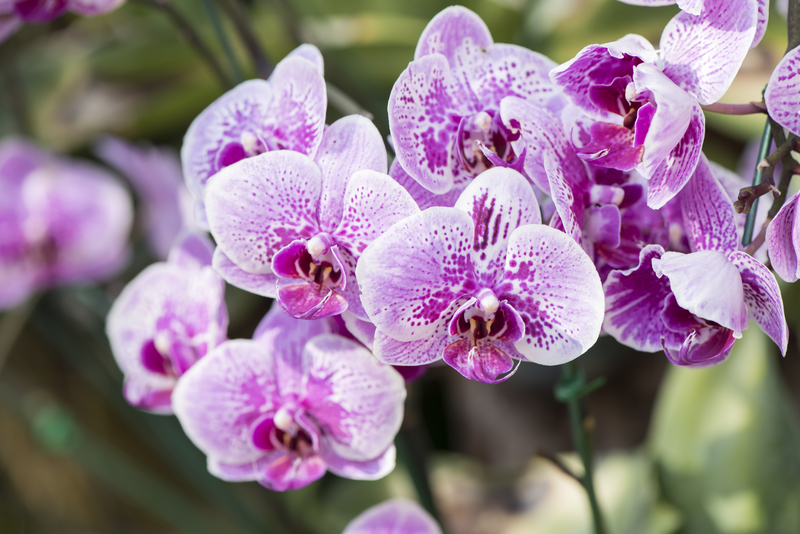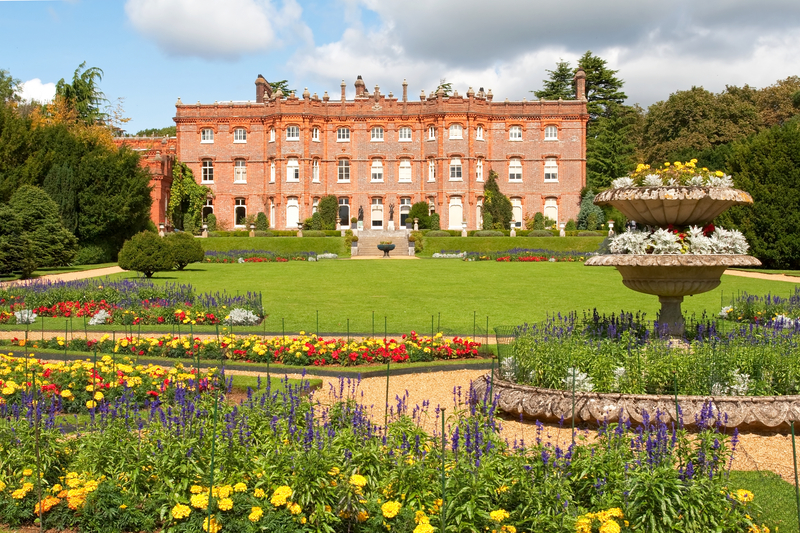Liven Up Your Cottage Garden With UK-Suitable Tropical Plants
Are you enchanted by the lush vibrancy of exotic landscapes but daunted by the unpredictable British weather? You can liven up your cottage garden with UK-suitable tropical plants and create a paradise full of bold foliage, dramatic architectural shapes, and dazzling colour--without moving to the equator!
In this comprehensive guide, we'll reveal how tropical garden design is becoming an exciting trend among UK gardeners. You'll discover the best UK-hardy tropical plants, expert tips for planting and care, and inspirational ideas to make your cottage garden stand out with year-round interest.
Why Choose a Tropical Theme for Your Cottage Garden?
Traditional English cottage gardens are loved for their romantic mix of perennials, edible herbs, and climbing roses. But adding UK-suitable tropical plants infuses energy, texture, and visual drama. Here's why going tropical works wonders:
- Architectural Impact: Exotic foliage brings contrast to softer cottage styles.
- Extended Colour: Many tropicals provide bold colour throughout summer and autumn.
- Wildlife Appeal: Tropical flowers often attract pollinators like bees and butterflies.
- Low Maintenance: Several hardy exotic plants need little attention once established.
- Personal Paradise: Tropical designs create a holiday-at-home vibe, perfect for escape and relaxation.
Can You Really Grow Tropical Plants in the UK?
Absolutely! While some true tropicals can't withstand UK winters, plenty of 'tropical-look' plants thrive in British gardens. Thanks to advances in plant breeding and garden design, you can blend hardy exotics with classic cottage perennials for a uniquely personal, eye-catching result.

Top UK-Suitable Tropical Plants For Your Cottage Garden
Ready to bring an exotic explosion to your landscape? Here are the best UK-hardy tropical plants--easy to find in most garden centres and proven to survive British winters (sometimes with minimal protection).
1. Tree Ferns (Dicksonia antarctica)
- Appearance: Huge, lush fronds over thick, hairy trunks
- Ideal Use: Feature plant for shade and moist borders
- Hardiness: Down to -10?C with winter protection
Tree ferns add instant drama and evoke a primordial forest feel. They thrive in dappled shade with good moisture. Wrap trunks with fleece or straw in harsh winters to ensure their survival.
2. Japanese Banana (Musa basjoo)
- Appearance: Striking paddle-shaped leaves up to 2m long
- Impact: Iconic 'tropical look' centerpiece
- Hardiness: Survives to -10?C if well mulched
The Musa basjoo is easily the most popular and hardy banana plant in the UK. While it rarely fruits, its enormous leaves create dramatic vertical accents against softer cottage planting.
3. Canna Lily (Canna indica and hybrids)
- Appearance: Bold, tropical leaves in green, bronze, or variegated forms; vibrant red, orange, or yellow blooms
- Ideal For: Sunny borders and large containers
- Hardiness: Down to -5?C; lift or mulch in coldest areas
Cannas offer spectacular late-summer colour and are easy to grow from rhizomes. Their architectural structure provides a perfect foil for cottage classics like delphiniums and roses.
4. Fatsia (Fatsia japonica)
- Appearance: Glossy, hand-shaped evergreen foliage
- Hardiness: To -15?C; excellent shade plant
- Benefits: Thrives in deep shade and urban gardens
If you're aiming to enhance your cottage garden with tropical foliage all year round, Fatsia japonica is a must. Its dramatic leaves and tolerance for tough spots make it highly versatile.
5. New Zealand Flax (Phormium tenax and cultivars)
- Appearance: Swordlike, upright leaves in green, bronze, and rainbow hues
- Use: Adds architectural structure; suits containers or borders
- Hardiness: Down to -9?C (some varieties hardier than others)
Phormium is loved for adding movement and colour contrasts, particularly when paired with softer forms like lavender or hardy geraniums.
6. Hardy Hibiscus (Hibiscus syriacus)
- Appearance: Exotic, dinner-plate blooms in pink, purple, or white
- Flowering: Late summer through autumn
- Hardiness: To -20?C
Bring a zing of the tropics with hardy hibiscus. Its giant flowers are a magnet for bees and butterflies, extending your garden's appeal into autumn.
7. Palm Trees
- Species: Trachycarpus fortunei (Chusan palm), Chamaerops humilis
- Appearance: Fan-shaped leaves on sturdy trunks
- Hardiness: Trachycarpus to -15?C; among the hardiest of all palms
Palms lend instant 'vacation' appeal and can anchor a tropical cottage garden. Choose a sheltered spot for best results and consider wrapping trunks in fleece for added protection during severe cold snaps.
Designing Your Tropical Cottage Garden
The secret to a stunning tropical-style cottage garden is blending exotic shapes and textures with the soft romance of traditional cottage plants. Here's how:
1. Layer Foliage For Drama
- Place bold, tall plants (bananas, cannas, palms) at the back or as focal points.
- Fill in lower levels with lush foliage: ferns, hostas, fatsia, and ornamental grasses.
- Underplant with trailing groundcovers or vibrant annuals for seasonal splashes of colour.
2. Mix in Classic Cottage Flowers
- Contrast architectural exotics with traditional favourites: foxglove, aquilegia, delphinium, hollyhock, and lavender work beautifully.
- Allow colour echoes--match hibiscus or canna blooms to cottage flowers for cohesion.
3. Add Water and Hardscaping
- Install a small pond or water feature for a humid, tropical feel--and to attract dragonflies.
- Use natural stone, rustic logs, or dark mulch for paths and borders to complement lush foliage.
4. Go Bold With Containers
- Use large pots for bananas, cannas, or colocasia; these can be moved to shelter in winter.
- Cluster pots of various heights for a layered, jungle aesthetic on patios or terraces.
Planting and Care Tips for UK-Hardy Tropical Plants
Choose your plants wisely--and give them a little special treatment--to ensure your tropical plants thrive in the British climate.
Soil & Position
- Drainage Counts: Most tropical species dislike waterlogged roots--ensure free-draining soil with added grit or compost as needed.
- Microclimates: Use south- or west-facing walls, hedges, or fences to create sheltered pockets for tender plants.
- Sun Lovers: Cannas, bananas, hibiscus, and phormium need full sun for best foliage and blooms.
- Shade Lovers: Ferns and fatsia thrive in part to full shade and help fill darker corners.
Feeding & Watering
- Feed generously through spring and summer with a high-potash or general purpose fertilizer.
- Watering: Exotics often need extra watering--especially during dry spells and if grown in containers.
Winter Protection & Overwintering
- Mulch tender perennials like cannas and bananas with straw, bark, or fleece in autumn.
- For container plants, move into a sheltered spot--such as a greenhouse, conservatory, or garage--when frosts are forecast.
- Tree ferns need the trunk (not the foliage) wrapped in fleece for severe cold.
- Phormium and cordylines benefit from tying up leaves to prevent snow damage.
Tip: Many tropicals, such as cannas and dahlias, can be lifted in autumn and stored in a frost-free place until replanting in spring.
UK-Tropical Planting Combinations That Work
Get creative! Here are a few tried-and-tested planting recipes to inspire your design:
- Fatsia + Hostas + Japanese Forest Grass (Hakonechloa): Layered shade border with unforgettable foliage texture.
- Musa basjoo + Digitalis + Crocosmia + Verbena bonariensis: Mix exotic and cottage styles for a vibrant wildlife-friendly border.
- Tree Fern + Lady's Mantle + Kniphofia ('Red Hot Poker'): Ferns soften the pokers' upright flower spikes, echoing a rainforest scene.
- Canna + Salvia + Rudbeckia: Dazzling late-summer and autumn display with tropical and prairie influences.
Don't Forget the Understory!
Layer in groundcovers like persicaria, heuchera, or ajuga for year-round colour and to keep weeds at bay in your lush, wild-feeling garden.
Where to Buy UK-Hardy Tropical Plants
Most large UK garden centres now provide a great selection of hardy exotic plants, especially in late spring and early summer. You can also find specialist nurseries online offering rare and interesting varieties.
- Plant Fairs and Open Gardens: Great places to discover less-common exotics and chat with expert growers.
- Online Nurseries: Many reputable suppliers offer delivery straight to your door. Look for reviews and RHS-endorsed sellers.
- Swap With Other Gardeners: The tropical gardening community is thriving--ask around for spare pups, offshoots, or rhizomes.

Frequently Asked Questions (FAQ)
Will bananas or other tropical plants survive a cold winter?
Many will survive with mulch or fleece protection. Musa basjoo and Trachycarpus fortunei are among the hardiest. More tender types can be overwintered indoors.
Do tropical plants attract pests in UK gardens?
Most hardy exotics are no more prone to pests than ordinary perennials. Watch for slugs on cannas and hostas, and treat affected plants with eco-friendly methods if needed.
How do I keep the 'tropical' look year-round?
Combine evergreen exotics (like fatsia and certain palms) with bold annuals for summer display, and structure with ornamental grasses and shrubs for winter drama.
Conclusion: Create Your Very Own UK-Tropical Cottage Garden
Adding UK-suitable tropical plants is one of the most exciting and transformative trends in British gardening. Whether you're redesigning a small shady border or reinventing a sunny front garden, tropical-style planting can be tailored to any size or setting.
Experiment with lush plant layers, bold focal points, and unexpected colour combinations. With a little planning and care, your cottage garden can become a spectacular oasis that thrives in the variable UK climate--wowing both visitors and local wildlife for years to come.
Give that fairytale charm a bold new twist: liven up your cottage garden with UK-suitable tropical plants and create a distinctive sanctuary filled with the sights, scents, and textures of the exotic--right outside your own back door!


